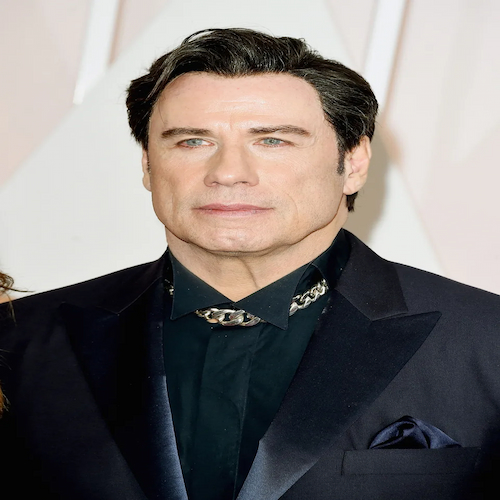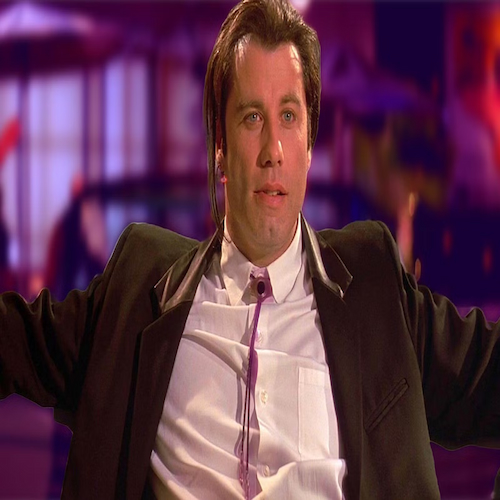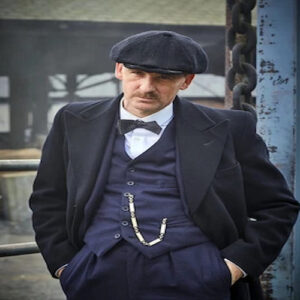John Travolta, Bio, ‘Bolt,’ ‘Old Dogs,’ and ‘From Paris With Love’

John Travolta, Biography
John Travolta is more than an actor — he is a performer whose presence seems to hum with rhythm, whose every role carries a trace of music and movement. From the electrifying pulse of Saturday Night Fever to the timeless charm of Grease, he became a symbol of an era, a face that captured both swagger and vulnerability.
After a meteoric rise in the late 1970s, his star dimmed for a time, as many bright lights do — but never for long. The 1990s brought a rebirth through Quentin Tarantino’s Pulp Fiction, a film that reminded the world of his effortless cool and magnetic humanity. Since then, Travolta has continued to explore an astonishing range of roles — from comedy to action, from heartbreak to redemption — proving that true stars do not fade; they simply shift their glow.
Who Is John Travolta?
John Travolta’s story begins in the suburbs of New Jersey, where a boy with boundless imagination dreamed far beyond the quiet streets that raised him. By sixteen, he had turned his back on the predictable path of high school halls, chasing instead the shimmering promise of the stage and screen. His gamble paid off spectacularly when he became a household name as Vinnie Barbarino in Welcome Back, Kotter — the swaggering, heartthrob class clown who made audiences laugh and swoon in equal measure.
John Travolta, Wikipedia
Name: John Travolta
Birth Year: 1954
Birth date: February 18, 1954
Birth State: New Jersey
Birth City: Englewood
Birth Country: United States
Gender: Male
Best Known For: John Travolta is an award-winning actor who had breakout roles in ‘Saturday Night Fever’ and ‘Grease.’ He had a career revival with ‘Pulp Fiction’ and has starred in a wide range of additional projects.
Soon, the lights grew brighter. Saturday Night Fever turned him into an icon of movement — a young man whose every dance step seemed to pulse with the heartbeat of a generation. Then came Grease, where his charm blazed across the screen, forever etching Danny Zuko into pop culture’s collective memory.
But fame, like rhythm, has its pauses. Travolta’s star dimmed for a time, only to surge back in 1994 when Pulp Fiction reintroduced him to the world — older, wiser, and infinitely more compelling. The performance earned him his second Oscar nomination and marked the beginning of a remarkable renaissance. From the sharp humor of Get Shorty to the political satire of Primary Colors, the ambitious Battlefield Earth, and the easy camaraderie of Wild Hogs, to his chilling transformation in American Crime Story, Travolta has continued to reinvent himself.
John Travolta, Early Life
John Joseph Travolta was born on February 18, 1954, in Englewood, New Jersey — the youngest of six children in a home where music, laughter, and performance filled the air like sunlight through open windows. The Travolta family lived and breathed show business; it was as if the stage itself had been stitched into their family fabric.
From an early age, John seemed destined to follow the melody. School could not contain his restless energy nor his growing fascination with the world of theater. By sixteen, he made a daring choice — to leave the familiar rhythm of high school life and step boldly into the unpredictable current of acting.
His debut came in 1972, under the modest glow of off-Broadway lights, in a production of Rain. Soon after, fate nudged him closer to destiny: he joined the Broadway cast of Grease, slipping into the role of Doody — a part that hinted, almost prophetically, at a future that would soon make him a global symbol of charm and rhythm.
In 1974, Travolta’s presence expanded further as he joined the original cast of the hit musical Over Here! alongside Patty and Maxine Andrews and Marilu Henner. On that stage, his talent began to shimmer unmistakably — a young performer stepping into his light, unaware that he was only at the dawn of something extraordinary.
John Travolta, Movies and TV Shows
‘Welcome Back, Kotter’ and ‘The Boy in the Plastic Bubble’
In 1975, John Travolta’s life changed almost overnight. As Vinnie Barbarino in the hit TV series Welcome Back, Kotter, he became the kind of heartthrob that defined a generation — effortlessly cool, mischievous, and impossible not to love. His swagger and smile lit up living rooms across America, and suddenly, the young man from New Jersey was no longer an aspiring actor; he was a star.
The following year brought a role of deeper resonance. In the made-for-television film The Boy in the Plastic Bubble (1976), Travolta stepped into the fragile world of a character confined by illness, his performance marked by surprising tenderness and empathy. Behind the camera, life mirrored art in a way both beautiful and tragic — Travolta found love with his co-star, actress Diana Hyland, who had played his mother in the film. Their romance was brief but profound, ending heartbreakingly when Hyland died of cancer. Her passing left a mark on Travolta’s heart that would echo through his later work — a quiet ache beneath the charm and energy.
‘Saturday Night Fever’
Before long, Hollywood came calling with promises of a larger stage. After small roles in the horror films The Devil’s Rain (1975) and Carrie (1976), Travolta found himself at the center of a cultural explosion. In 1977, dressed in a white suit and armed with a strut that seemed to command the dance floor, he became Tony Manero in Saturday Night Fever.
That role didn’t just make him a movie star — it made him a symbol. His dance moves became the heartbeat of a decade, his swagger a kind of anthem for restless youth. The film earned him an Academy Award nomination and immortalized his image as the embodiment of disco’s golden age — a moment when rhythm, rebellion, and yearning converged beneath a spinning mirror ball.
‘Grease’
If Saturday Night Fever made John Travolta a star, Grease turned him into a legend. In 1978, he slipped once more into the world of song and dance — this time as Danny Zuko, the effortlessly cool leader with slicked hair, a leather jacket, and a heart caught between swagger and sincerity. Across from him stood Olivia Newton-John as Sandy, the picture of innocent longing. Together, they created a chemistry so vibrant it practically hummed off the screen.
The film was more than a hit — it was a phenomenon. Made for just $6 million, Grease went on to earn nearly $400 million worldwide, becoming the highest-grossing live-action musical of all time. For generations, it would remain a touchstone of youthful romance and rebellious charm, a cinematic summer that never quite ended.
‘Moment by Moment,’ ‘Two of a Kind,’ and ‘Look Who’s Talking’
But fame, like any dance, has its dips. Following his whirlwind success, Travolta found himself navigating an uncertain rhythm. In 1978, he starred opposite Lily Tomlin in the romantic drama Moment by Moment — a film that faltered despite his efforts. Yet hope returned with Urban Cowboy (1980), a story of love, grit, and mechanical bulls that resonated with audiences and gave him another taste of box office triumph.
The Saturday Night Fever
Still, the years that followed were uneven. The Saturday Night Fever sequel Staying Alive (1983), directed by Sylvester Stallone, saw his Tony Manero chasing Broadway dreams but failed to capture the electricity of its predecessor. Films like Two of a Kind (1983), reuniting him with Olivia Newton-John, and Perfect (1985), alongside Jamie Lee Curtis, struggled to connect with critics or fans.
By the late 1980s, Travolta’s once-blinding star had dimmed. Even a modest success with the Look Who’s Talking trilogy couldn’t fully shake off the whispers that he had become a relic of a bygone era — another bright flame cooling in Hollywood’s fickle light.
John Travolta, Acclaim for ‘Pulp Fiction’ and ‘Get Shorty’

Then came 1994 — the year everything changed. In Quentin Tarantino’s Pulp Fiction, Travolta emerged reborn. As Vincent Vega, the smooth, conflicted hitman with a taste for dance and danger, he was magnetic — funny, tragic, and irresistibly alive. His mesmerizing twist with Uma Thurman became one of cinema’s most iconic moments, and his performance earned him a second Oscar nomination.
Critics and audiences alike were reminded that Travolta wasn’t just a star — he was a craftsman of character, capable of surprising depth. The comeback continued with Get Shorty (1995), where his portrayal of the charismatic loan shark Chili Palmer earned him a Golden Globe Award. The film’s success reaffirmed his place in Hollywood’s upper ranks, though its sequel, Be Cool (2005), met a far quieter reception despite lively performances from Dwayne Johnson and Vince Vaughn.
‘Broken Arrow,’ ‘Primary Colors,’ and ‘Battlefield Earth’
The late 1990s saw Travolta exploring a spectrum of roles — from the action-packed Broken Arrow (1996) and the soulful Phenomenon (1996) to Mike Nichols’ Primary Colors (1998), where he played a charismatic Southern politician clearly modeled on President Bill Clinton. His performances revealed a surprising maturity — an actor unafraid to balance charm with moral ambiguity.
Yet the close of the decade brought turbulence once again. The General’s Daughter (1999) offered intrigue and intensity, but Battlefield Earth (2000), his long-cherished adaptation of L. Ron Hubbard’s sci-fi novel, proved a misstep of epic proportions. Critics savaged it, and the film quickly became a symbol of Hollywood excess. For Travolta, it was a painful reminder that passion projects can burn as easily as they inspire.
‘Swordfish’ and ‘Wild Hogs’
Still, resilience remained his hallmark. Travolta returned in Swordfish (2001), a sleek cyber-thriller that paired him with Halle Berry, Hugh Jackman, and Don Cheadle. Through the 2000s, he continued to stretch his range — from the quiet melancholy of Love Song for Bobby Long (2004) and the heroism of Ladder 49 (2004), to the joyful absurdity of Wild Hogs (2007), where he reminded audiences that he still had impeccable comedic timing and heart.
Travolta’s journey — full of dizzying highs, humbling lows, and constant reinvention — reads like the life of a performer who never stopped dancing, even when the music changed.
John Travolta, Gender Bender in Hairspray
In 2007, John Travolta returned to the rhythm that first made him famous — song, dance, and transformation. But this time, the transformation was complete. In the film adaptation of the Broadway musical Hairspray — itself inspired by John Waters’ 1988 cult classic — Travolta stepped into the unlikely yet delightful role of Edna Turnblad, a warm, full-figured mother with a heart as large as her hair.
Hidden beneath layers of wigs, prosthetics, and pastel dresses, he vanished completely into Edna’s world, infusing her with humor, tenderness, and a deep maternal charm. Opposite Christopher Walken’s whimsical Wilbur, Travolta reminded audiences that joy was his native language — and his musical instincts remained flawless. His performance earned him yet another Golden Globe nomination and proved, once again, that reinvention was his truest art form.
John Travolta ‘Bolt,’ ‘Old Dogs,’ and ‘From Paris With Love’
The following years saw Travolta exploring new creative lanes. In 2008, he lent his voice to the titular canine hero in Disney’s animated adventure Bolt, playing a loyal dog who believed himself to be a superhero. The role allowed him to blend humor with heart — and his duet with co-star Miley Cyrus, “I Thought I Lost You,” added a touch of warmth to the film’s end credits.
He returned to live-action comedy in 2009’s Old Dogs, joining Robin Williams and Bernie Mac in a story of two businessmen suddenly tasked with caring for a pair of spirited seven-year-old twins. A year later, he reinvented himself yet again — this time as Charlie Wax, a bald, goateed, and trigger-happy secret agent in the high-octane thriller From Paris With Love (2010). By 2012, he was back in the shadows of moral ambiguity with Oliver Stone’s Savages, proving that beneath the charm, he could still summon danger with ease.
READ ALSO: Nicole Kidman, Bio, from ‘Dead Calm’ to ‘Eyes Wide Shut’
Off-screen, Travolta found himself in the headlines after the 2014 Academy Awards, when he famously mispronounced Idina Menzel’s name as “Adele Dazeem.” The moment went viral, but true to form, Travolta responded with grace and humor — sending Menzel flowers and a personal note of apology that only deepened his reputation for charm and humility.
‘The People v. O.J. Simpson: American Crime Story’
After his turn in the thriller The Forger (2014), Travolta stepped back into the limelight of prestige television. In early 2015, it was announced that he would join the cast of FX’s The People v. O.J. Simpson: American Crime Story, the Ryan Murphy-produced dramatization of the infamous 1995 trial that captivated the nation.
In the role of defense attorney Robert Shapiro, Travolta delivered a meticulous, layered performance — equal parts vanity, strategy, and unease — surrounded by an acclaimed ensemble including Cuba Gooding Jr., Sarah Paulson, Sterling K. Brown, and Nathan Lane. When the series debuted on February 2, 2016, it became an instant cultural event, earning Travolta a Golden Globe nomination and reminding audiences that, even decades into his career, he could still surprise them.
‘Gotti’ and Later Roles
Travolta’s passion for challenging material continued to guide him. In 2011, he signed on to portray mob boss John Gotti in a long-gestating biopic. The project endured years of delays and high-profile departures, including Al Pacino and Joe Pesci, before finally reaching completion in 2016. When Gotti was released in 2018, the reviews were harsh, but Travolta’s commitment was undeniable — a testament to his willingness to take risks, even when the odds were stacked against him.
Undeterred, he moved forward. In 2019, he returned to the screen with Trading Paint, a story set in the high-adrenaline world of car racing, and the neo-noir thriller The Poison Rose, continuing to explore new characters and genres with the same restless curiosity that had always defined his journey.
John Travolta, Wife, and Children
Behind the glamour and reinvention, Travolta’s truest role was that of husband and father. He married actress Kelly Preston in 1991, and together they built a family grounded in love and laughter. Their first child, Jett, was born on April 13, 1992, followed by their daughter, Ella Bleu, in 2000. Travolta often spoke of fatherhood with quiet reverence, once reflecting that having children was like catching lightning — a rare, unpredictable gift to be treasured while it lasted.
READ ALSO: Tim Allen, Bio, Early Years and Family Tragedy
That lightning dimmed in 2020, when Preston passed away after a two-year battle with breast cancer. Her death marked a profound loss for Travolta, yet even in grief, he continued to embody grace — a man who had spent his life under bright lights, still finding strength in the tender, flickering glow of memory and love.
Death of Jett Travolta
In the midst of fame’s bright glow, darkness found the Travolta family in the cruelest of ways. On January 2, 2009, during what was meant to be a peaceful family vacation in the Bahamas, tragedy struck — their beloved son, Jett, passed away. He was just sixteen.
The world learned that a seizure had taken his life, a simple word that could never hold the weight of the grief it left behind. For John and Kelly, time seemed to still. The laughter that once filled their home fell silent, replaced by an ache that language could scarcely express.
Yet even in that silence, love endured. Sixteen months after their loss, in May 2010, the couple shared news that brought a quiet light back into their lives — they were expecting another child. That November, their son Benjamin was born, a tender reminder that while sorrow may carve deep hollows in the heart, love has a way of finding its way back in, softly, gently, as if to say that life — even in its brokenness — still holds moments of grace.



